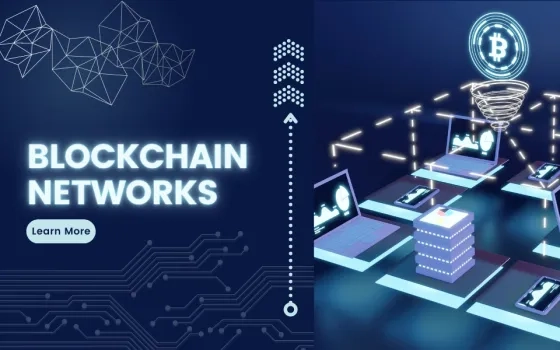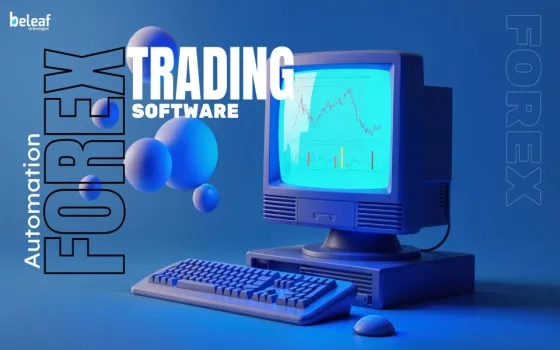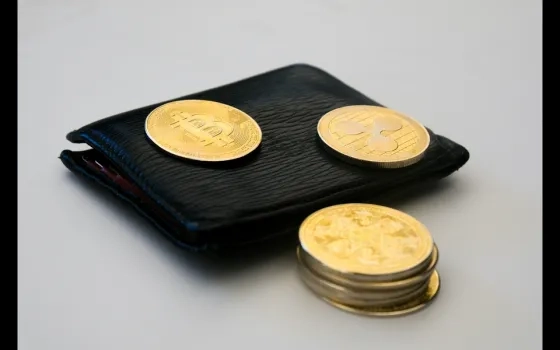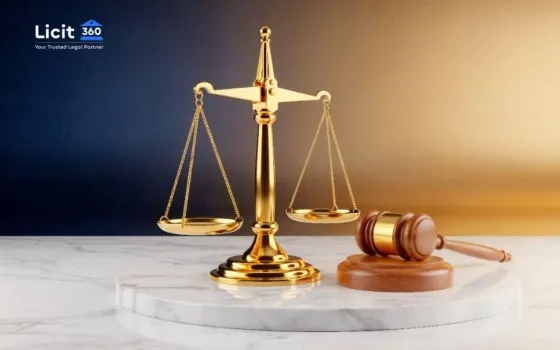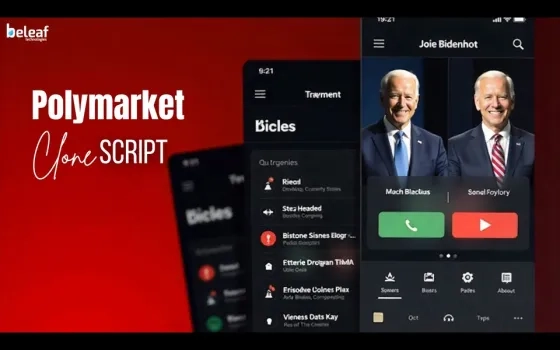Blockchain Networks used in NFT Marketplaces
Blockchain technology is the backbone of the NFT (Non-Fungible Token) marketplace, which is a digital platform for buying and selling unique digital assets. The following are some of the blockchain technologies used in NFT marketplaces:
Ethereum
Ethereum is the second-largest blockchain platform after Bitcoin and is used as the backbone of many NFT (non-fungible token) marketplaces. NFTs are unique digital assets that can represent anything from artwork, music, videos, and even tweets. These assets are tokenized on the blockchain and are stored in a decentralized manner that ensures their ownership and authenticity.
Ethereum is the most popular blockchain network used in NFT marketplaces, and for good reasons. It has a native programming language called Solidity, which allows developers to create smart contracts that can be used to create, sell, and trade NFTs. Smart contracts are self-executing contracts with the terms of the agreement between buyers and sellers being directly written into lines of code. They allow for transactions to occur in a trustless and decentralized manner, without the need for intermediaries such as banks or payment processors.
One of the most popular NFT marketplaces that use Ethereum is OpenSea. OpenSea is a decentralized marketplace that allows users to buy, sell, and trade NFTs. It has been in operation since 2017 and has become one of the largest NFT marketplaces in terms of trading volume. OpenSea uses Ethereum to store and transfer NFTs, which allows for a secure and transparent marketplace.
Another popular NFT marketplace that uses Ethereum is SuperRare. SuperRare is a curated NFT marketplace that showcases digital artwork from some of the world's most talented artists. It uses Ethereum blockchain to store and transfer NFTs, which ensures their authenticity and ownership.
Rarible is another NFT marketplace that uses Ethereum to enable users to create and sell unique digital assets. Rarible is a community-owned platform that allows creators to monetize their digital creations by selling them as NFTs. It uses Ethereum to store and transfer NFTs, which allows for a secure and transparent marketplace.
In addition to OpenSea, SuperRare, and Rarible, other NFT marketplaces such as Nifty Gateway, Async Art, and Foundation also use Ethereum. The blockchain’s ability to enable developers to create smart contracts and the security and transparency of its blockchain technology have made it the preferred choice for many NFT marketplaces and their users.
Ethereum has been in operation since 2015 and has a vibrant ecosystem of developers, projects, and communities. Its ability to enable developers to create decentralized applications (dApps) and smart contracts has made it a popular choice for many blockchain-based projects. NFT marketplaces are just one example of the many use cases for Ethereum, and as the NFT market continues to grow, we can expect to see more innovation and adoption of this technology.
Polygon
Polygon (formerly known as Matic Network) is a Layer-2 scaling solution for Ethereum that provides faster and cheaper transactions. It is used by several NFT (non-fungible token) marketplaces to improve the efficiency and cost-effectiveness of NFT transactions.
One of the most popular NFT marketplaces that use Polygon is OpenSea. OpenSea is a decentralized marketplace that allows users to buy, sell, and trade NFTs. It has been in operation since 2017 and has become one of the largest NFT marketplaces in terms of trading volume. OpenSea uses Polygon to reduce gas fees and improve transaction speed for users.
Gas fees on the Ethereum network have been a major challenge for NFT marketplaces. Gas fees are the fees paid to miners to process transactions on the blockchain. With the increasing demand for NFTs, gas fees have become expensive, making it difficult for users to buy and sell NFTs. Polygon's technology allows for seamless transactions, which makes it a popular choice for NFT marketplaces.
Nifty Gateway is another NFT marketplace that uses Polygon to enable faster and cheaper transactions. Nifty Gateway is a curated NFT marketplace that features limited edition drops from some of the world's top artists. It uses Polygon's Layer-2 scaling solution to reduce gas fees and improve the user experience.
In addition to OpenSea and Nifty Gateway, other NFT marketplaces such as Aavegotchi, Decentraland, and SuperRare also use Polygon. The network's ability to reduce fees and improve transaction speed has made it a popular choice for NFT marketplaces and their users.
Polygon's Layer-2 scaling solution works by building a parallel network on top of the Ethereum blockchain. This network is designed to enable faster and cheaper transactions. It allows for faster block times and supports multiple Layer-2 scaling solutions, such as Plasma and Optimistic Rollups. This allows for a seamless experience for users, with transactions being processed quickly and at lower costs.
In conclusion, Polygon's technology has become a game-changer for NFT marketplaces. Its ability to reduce gas fees and improve transaction speed has made it a popular choice for NFT marketplaces and their users. As the demand for NFTs continues to grow, we can expect to see more adoption of Polygon's technology by NFT marketplaces and other blockchain-based projects.
BNB Chain
BNB Chain (Formerly Binance Smart Chain) is a blockchain platform launched by Binance in 2020. It is built on top of the Binance Chain and is designed to be compatible with the Ethereum Virtual Machine (EVM). It has gained popularity as a blockchain that offers fast and cheap transactions, making it a popular choice for NFT (non-fungible token) marketplaces.
One of the most popular NFT marketplaces that use the BNB Chain is BakerySwap. BakerySwap is a decentralized exchange that allows users to buy, sell, and trade NFTs. It has gained popularity due to its low transaction fees and fast transaction times, thanks to its integration with the BNB Chain.
BNB Chain has also been used by other NFT marketplaces such as Treasureland and Treasure Key. Treasureland is a decentralized NFT marketplace that allows users to buy and sell unique digital assets. It uses BNB Chain to ensure faster and cheaper transactions. Treasure Key, on the other hand, is a platform that allows users to mint and trade NFTs. It also uses BNB Chain to ensure fast and cheap transactions.
One of the advantages of the BNB Chain is its low transaction fees. The network uses a different consensus mechanism than Ethereum, which allows it to process transactions faster at reduced costs. This makes it an attractive option for NFT marketplaces, where high transaction fees can be a barrier for users.
BNB Chain also offers interoperability with other blockchains. This means that NFTs can be easily transferred between the BNB Chain and other blockchain platforms, making it a versatile option for NFT marketplaces.
In addition to low transaction fees and interoperability, BNB Chain also offers a high level of security. It uses a proof-of-staked authority consensus mechanism, which ensures that transactions are secure and transparent.
In conclusion, BNB Chain has become a popular choice for NFT marketplaces due to its fast transaction times, low transaction fees, interoperability, and security. As the demand for NFTs continues to grow, we can expect to see more NFT marketplaces adopting this network and other blockchain platforms to improve their efficiency and user experience.
Solana
Solana is a high-performance blockchain platform that has gained popularity in recent years due to its fast transaction times and low fees. It is becoming an increasingly popular choice for NFT (non-fungible token) marketplaces, offering a more efficient and cost-effective way to trade NFTs.
One of the most popular NFT marketplaces that use Solana is Digital Eyes. Digital Eyes is a decentralized NFT marketplace that allows users to buy, sell, and trade NFTs. It is built on the Solana blockchain, which allows for fast transaction times and low fees. Digital Eyes has gained popularity due to its user-friendly interface and its ability to offer a seamless trading experience.
Another popular NFT marketplace that uses Solana is Solsea. Solsea is a decentralized NFT marketplace that features a variety of NFTs, including artwork, collectibles, and gaming items. It is built on the Solana blockchain, which allows for fast and cheap transactions, making it a popular choice for users.
Solana's technology is based on a unique consensus mechanism called Proof of History (PoH). PoH is a cryptographic clock that allows Solana to process transactions quickly and efficiently. This makes it a popular choice for NFT marketplaces, where fast transaction times are important for the user experience.
In addition to fast transaction times, Solana also offers low fees. This is due to its unique architecture, which allows it to process transactions more efficiently than other blockchains. This makes it an attractive option for NFT marketplaces, where high transaction fees can be a barrier for users.
Solana also offers interoperability with other blockchain platforms. This means that NFTs can be easily transferred between Solana and other blockchain platforms, making it a versatile option for NFT marketplaces.
In conclusion, Solana has become a popular choice for NFT marketplaces due to its fast transaction times, low fees, and interoperability. As the demand for NFTs continues to grow, we can expect to see more NFT marketplaces adopting Solana and other blockchain platforms to improve their efficiency and user experience.
Harmony
Harmony is a blockchain designed to offer fast and secure transactions. It is becoming increasingly popular for NFT (non-fungible token) marketplaces due to its low fees and fast transaction times. Harmony is a proof-of-stake (PoS) blockchain that is compatible with the Ethereum Virtual Machine (EVM), making it easy for developers to build on.
One of the most popular NFT marketplaces that use Harmony is LMA. LMA is an NFT marketplace that allows users to buy, sell, and trade NFT artworks. It is built on the Harmony blockchain, which allows for fast transaction times and low fees.. Anyone can buy the unique artwork NFTs on LMA, and become the owner of that specific artwork. For each trade, the artwork’s price will automatically increase 100% that will be divided between sellers and the platform’s native token burning mechanism.
Another popular NFT marketplace that uses Harmony is Vandal. Vandal is a decentralized NFT marketplace that allows artists to showcase their artwork and sell it to collectors. It is built on the Harmony blockchain, which allows for fast and cheap transactions, making it a popular choice for users.
Harmony uses a unique consensus mechanism called Effective Proof-of-Stake (EPoS), which allows it to process transactions quickly and efficiently. EPoS is designed to eliminate the need for validators to store the entire blockchain, which reduces the storage requirements for validators and improves the scalability of the blockchain.
In addition to fast transaction times, Harmony also offers low fees. This is due to its efficient architecture, which allows it to process transactions more efficiently than other blockchain platforms. This makes it an attractive option for NFT marketplaces, where high transaction fees can be a barrier for users.
Harmony also offers interoperability with other blockchain platforms. This means NFTs can be easily transferred between Harmony and other blockchain platforms, making it a versatile option for NFT marketplaces.
In conclusion, Harmony has become a popular choice for NFT marketplaces due to its fast transaction times, low fees, and interoperability. As the demand for NFTs continues to grow, we can expect to see more NFT marketplaces adopting Harmony and other blockchain platforms to improve their efficiency and user experience.
Avalanche
Avalanche is a blockchain platform designed for scalability, speed, and low transaction fees. It has gained popularity in recent years for its ability to support decentralized finance (DeFi) and NFT (non-fungible token) marketplaces. Avalanche offers a fast and efficient way to trade NFTs, making it an increasingly popular choice for NFT marketplaces.
One of the most popular NFT marketplaces that uses Avalanche is OpenSea. OpenSea is a decentralized NFT marketplace that allows users to buy, sell, and trade NFTs. It is built on the Ethereum blockchain, but it also supports Avalanche, making it easy for users to trade NFTs on both platforms. OpenSea has gained popularity due to its user-friendly interface and its ability to offer a seamless trading experience.
Another popular NFT marketplace that uses Avalanche is Avaware. Avaware is a decentralized NFT marketplace that allows artists to showcase their artwork and sell it to collectors. It is built on the Avalanche blockchain, which allows for fast and cheap transactions, making it a popular choice for users.
Avalanche uses a unique consensus mechanism called Avalanche Consensus Protocol (ACP), which allows it to process transactions quickly and efficiently. ACP is designed to be highly scalable, which means that it can handle a large number of transactions without compromising on performance.
In addition to fast transaction times, Avalanche also offers low fees. This is due to its efficient architecture, which allows it to process transactions more efficiently than other blockchain platforms. This makes it an attractive option for NFT marketplaces, where high transaction fees can be a barrier for users.
Avalanche also offers interoperability with other blockchain platforms. This means NFTs can be easily transferred between Avalanche and other blockchain platforms, making it a versatile option for NFT marketplaces.
In conclusion, Avalanche has become a popular choice for NFT marketplaces due to its fast transaction times, low fees, and interoperability. As the demand for NFTs continues to grow, we can expect to see more NFT marketplaces adopting Avalanche and other blockchain platforms to improve their efficiency and user experience.
Conclusion
We have seen the popular blockchain networks preferred by NFT marketplace businesses currently. Apart from these networks, there are more that have new-age features, but are lesser-known. In case you plan to build an NFT marketplace, it is up to you to choose the ideal blockchain(s) to base your platform on, as it seals the business. Consider researching extensively based on your niche’s popularity, that can be a vital factor to find the ideal blockchain to build your platform on. On the other hand, you can opt for expert help to have a better picture.



